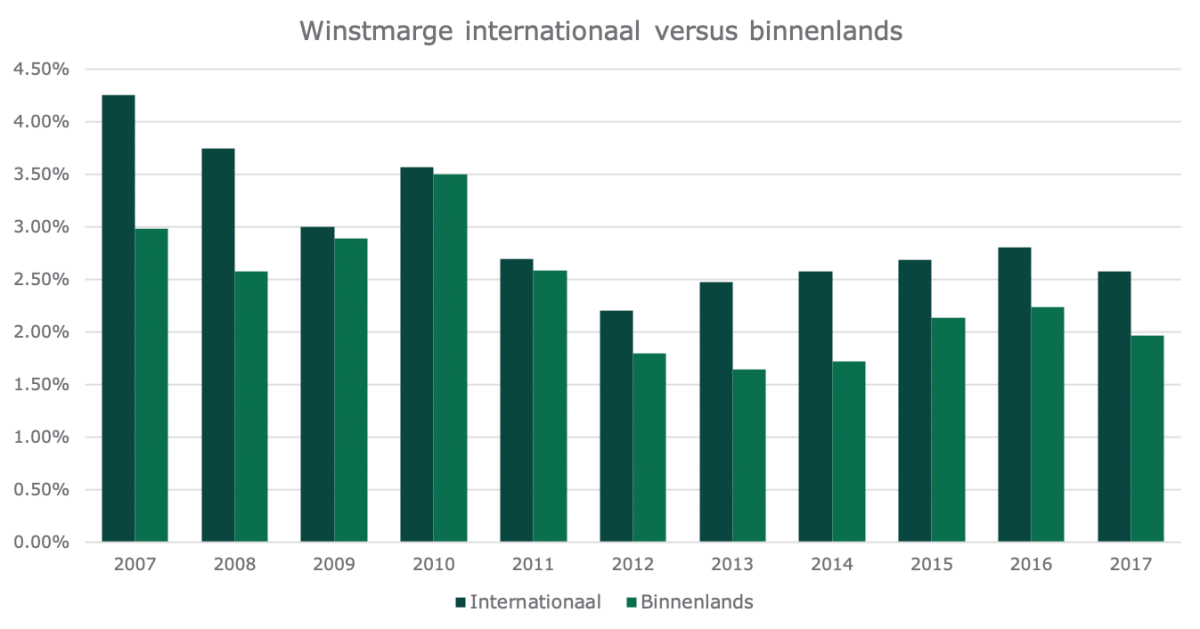Dutch family businesses derive more than half of their sales from abroad, according to research on Dutch family businesses. The so-called internationalization rate has increased by 18.3% over the past 10 years.
Clifton Finance, in collaboration with the Landelijk Expertisecentrum Familiebedrijven of Windesheim University of Applied Sciences, conducted a large data study on Dutch family businesses between 2007 and 2017.
Researchers from the Landelijk Expertisecentrum Familiebedrijven and Clifton Finance found, based on a comprehensive data survey, that 50.1% of the turnover of family businesses comes from abroad. The study included 228 companies in the Netherlands with at least €40 million in sales that are owned by at least a second-generation family member.
The study reveals that in 10 years, from 2007 to 2017, the percentage of family businesses’ turnover earned abroad grew from 42.4% to 50.1%.
In an interview in the Telegraaf of July 16, 2019, Maarten Vijverberg, partner at Clifton Finance, calls the results not remarkable. “That countries with a small domestic market produce many companies that look across the border is a well-known phenomenon.” He refers to the Netherlands, Belgium and Switzerland, all of which can label more than 90 percent of their trade as international, according to the Swiss Economic Institute Globalization Index.
Vijverberg sees a possible explanation for the continued internationalization of Dutch family business also in the more attractive profit margins across the border. Family businesses operating internationally abroad achieve an average profit margin of 2.96%, according to his statistics, versus 2.37% for companies focusing purely on the domestic market.
Higher profit margin but are more volatile.
Family businesses operating internationally are more profitable than those operating nationally. In contrast, profit margins are more volatile: domestic margins fluctuated by a maximum of 1.86%; foreign margins had an average difference of 2.05% between the highest and lowest margins.
Windesheim researcher Erik Veldhuizen explains this further: “The internationally operating family businesses benefited earlier from the recovery of the economy in the surrounding countries. It is only in the last three years that the growth of family businesses operating in the Netherlands has been greater than the international family businesses. But on balance, the growth of internationally operating family businesses is stronger.
The bigger, the more international
The survey reveals that larger family businesses in particular are more internationally oriented. Companies with an international focus have seen their sales grow from an average of about €300 million to €430 million between 2007 and 2017. The number of employees increased from about 1275 FTEs to 1600 FTEs. The Dutch family-owned companies operating predominantly in the Dutch market saw sales grow from €160 million to €250 million, and the number of FTEs from 500 to 800.
Industry and Construction sector detailed
A few additional striking findings by sector can be noted, says Vijverberg: “If we look sector-wide and also at the size of the target group we surveyed by sector, we can say that family businesses in the industry sector are the most internationally active. They have shown a stable ebitda margin over recent years of 6.3% on average and have a strong solvency of 52% over the last 10 years.
A sector that has traditionally had the least internationalization is construction. Of the 29 large family firms in this sector, 38% were founded before 1918, and in more than half the cases they are headed by a third, fourth or fifth generation family member. They have not been able or willing to make the move abroad also because the construction industry does not lend itself as much to this. This while the Internationally operating construction companies did make an average margin of 13% during the research period. The domestically oriented family construction companies remained stuck at 4%.
Growing internationalization in services
The service industry shows the largest growth in the number of family businesses. In this sector, the largest second-generation group is active in the family business at 45%. International trade in the service sector grew from 55% in 2007 to 68% in 2017.


